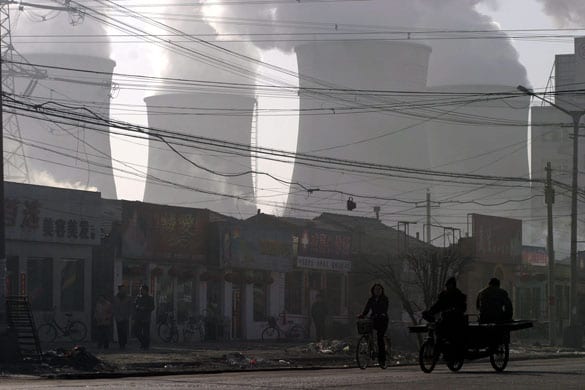The rate of approvals for new coal-fired generation in China – the world’s biggest emitter of greenhouse gases – has soared to a record high in 2015, with 96GW approved in the first nine months of the year.
The rate of approvals – which equates to roughly two times the size of Australia’s entire grid capacity – represents an increase of 178 per cent over the previous year, despite the country’s promise to cap emissions by 2030, and to play a constructive role in the upcoming climate talks.
The data comes from Deutsche Bank, which notes that 78GW of coal-fired generation is currently under construction, and a total of 130GW of coal generators have been approved since the start of 2014. Around 160GW is expected to be constructed in the next three years.
Most of this new capacity is going into the northern and north-west regions, particularly Shanxi, Xinjian and inner Mongolia. Coal capacity has been moved away from the highly-populated coastal region from Beijing to Shanghai.
Deutsche says most of the approvals have been waved through by provincial governments hungry for economic stimulus, and with many coal mine closures. The company Shenhua, which is proposing the hotly contested Watermark coal mine in NSW, is responsible for one-quarter of the proposals.
 But it is not all bad news. Deutsche Bank says that despite the massive additions of new coal capacity, the actual usage, or burning, of coal will not rise all that dramatically, because the coal plants are being used less than half the time, on average.
But it is not all bad news. Deutsche Bank says that despite the massive additions of new coal capacity, the actual usage, or burning, of coal will not rise all that dramatically, because the coal plants are being used less than half the time, on average.
This graph to the right shows that average coal utilisation is falling below 50 per cent, to 49 per cent, from levels above 61 per cent in 2012.
Indeed, the country now faces over-capacity of baseload power, although the low cost of domestic coal mining means many coal generator operators are still making money from their investments.
Deutsche says it expects China authorities to impose stricter controls of new capacity approval in 2016-18, because of those concerns about over-capacity (and hopefully because of a successful outcome in the Paris climate change talks).
Two key graphs underline the proposition that while coal capacity is increasing dramatically, and will total more than 1,000GW by 2020, rising alternatives and slowing demand means that the share of cleaner generation is rising.
This first one shows the additions expected in the next five years. Deutsche Bank has increased its estimates for wind and solar capacity additions lifting solar capacity to 130GW (from 42GW) and wind capacity to 250GW (from 142GW). Nuclear also rises from 27GW to 54GW, and hydro increases by around 15 per cent.
The end result is that by 2020, actual thermal generation (which includes both coal and gas) will increase by less than 8 per cent in absolute numbers, while the output of solar power stations is expected to increase five-fold, wind energy nearly three-fold and nuclear more than two-fold.
That means that by 2020, based on Deutsche Banks’s estimates, one-third of total generation will come from low-carbon sources such as hydro, wind, solar, nuclear and biomass. (Please click to enlarge graph).













